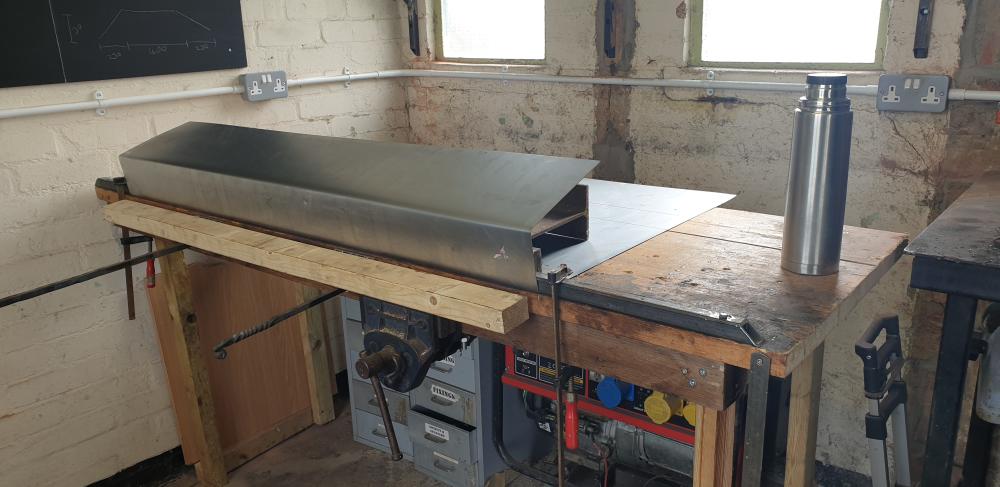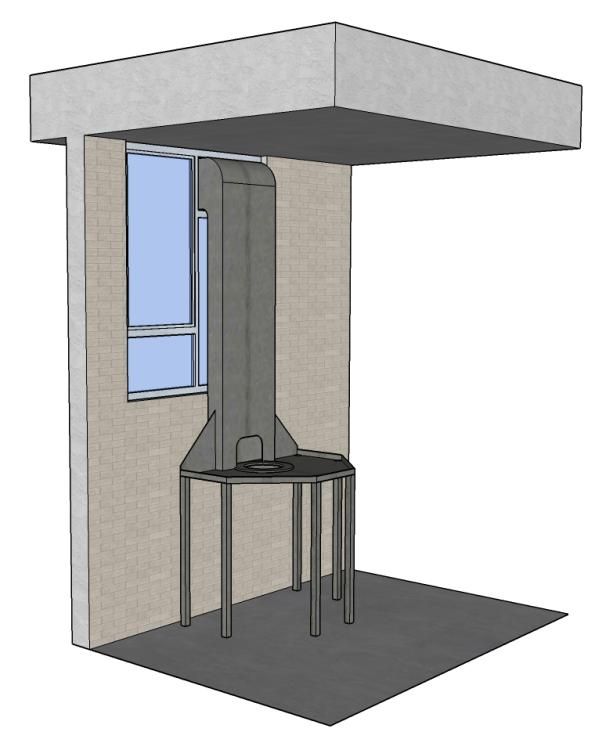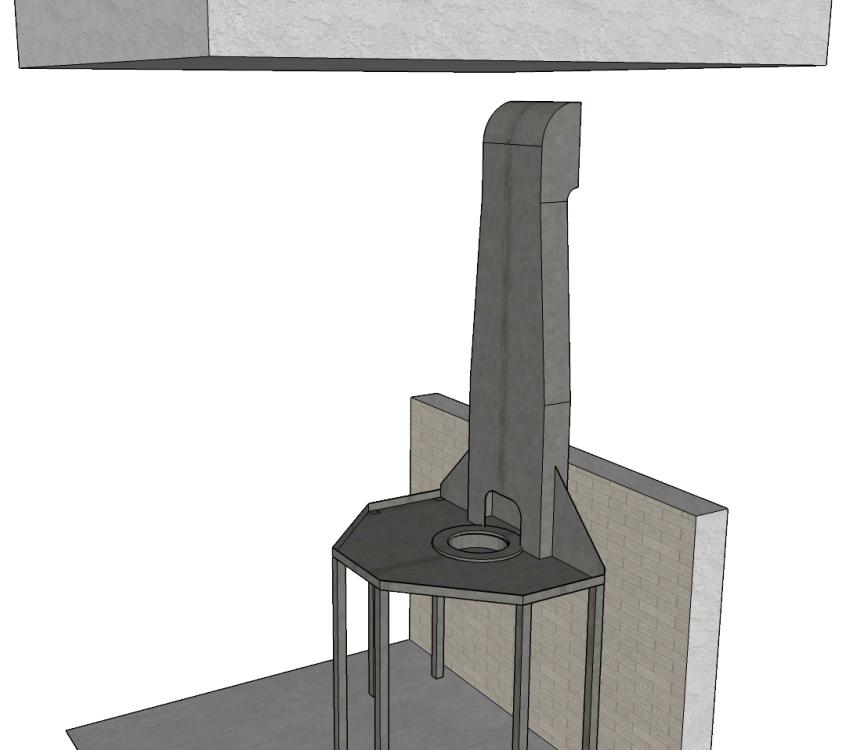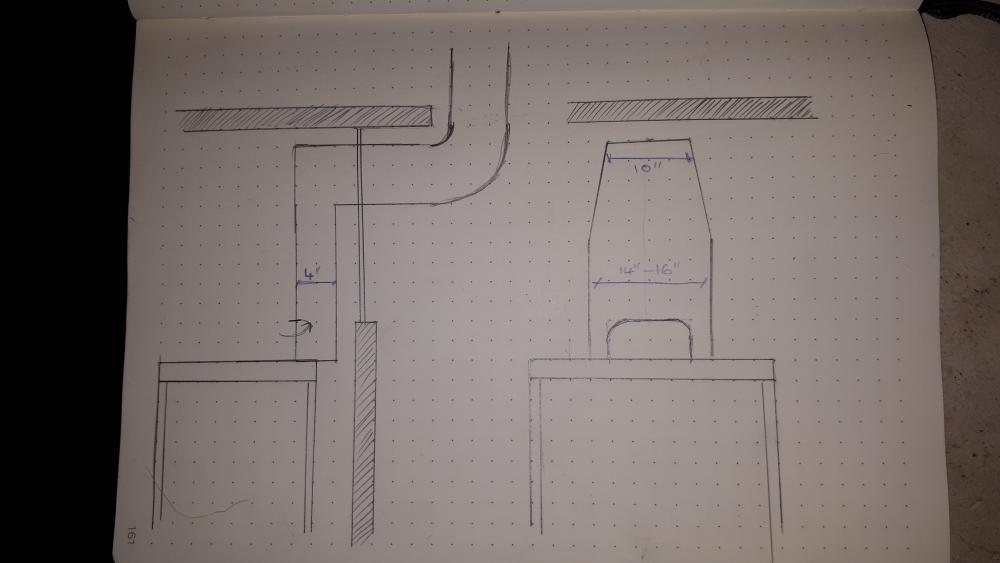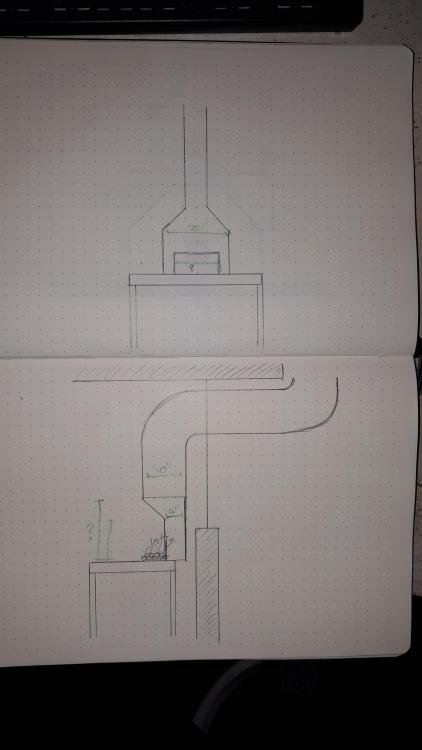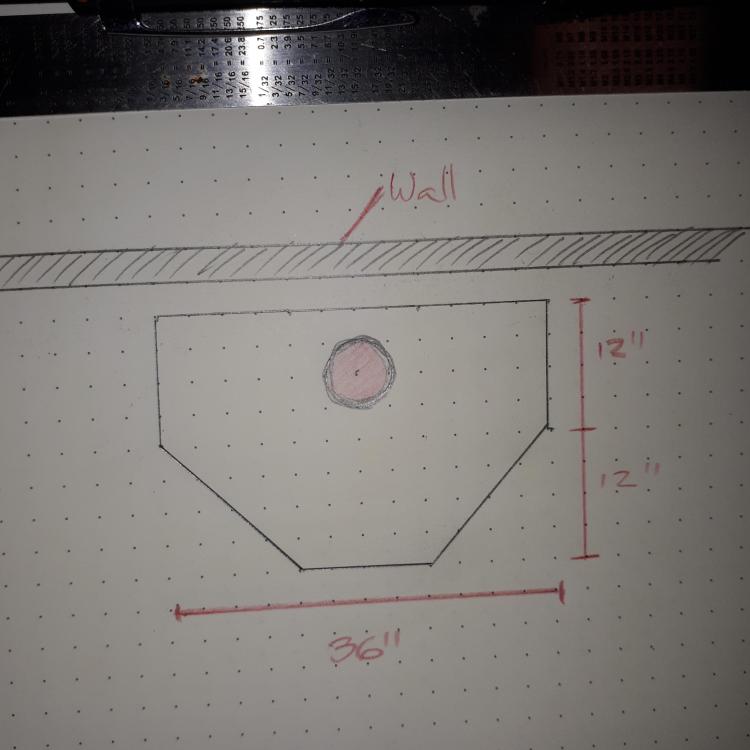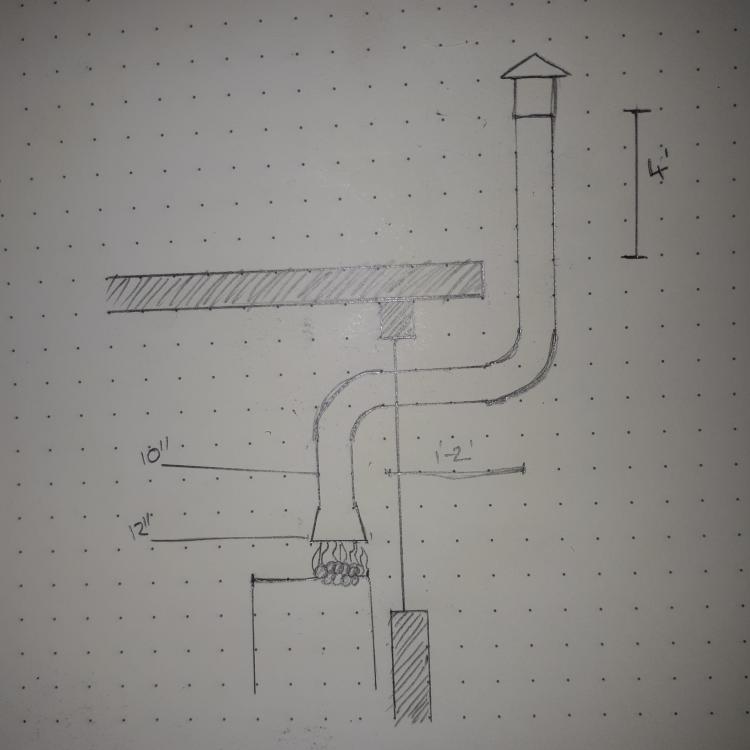-
Posts
45 -
Joined
-
Last visited
Contact Methods
-
Website URL
drunkendwarfiron.com
Profile Information
-
Gender
Male
-
Location
Norwich, UK
Recent Profile Visitors
-

New shop flue - Sanity check required
Drunken Dwarf replied to Drunken Dwarf's topic in Chimneys, Hoods, and Stacks
So, after various problems with suppliers, my sheet finally arrived. On with the work! 1mm sheet is surprisingly hard work to bend without a proper jig:p -

New shop flue - Sanity check required
Drunken Dwarf replied to Drunken Dwarf's topic in Chimneys, Hoods, and Stacks
Thanks for all the help, I'm ordering the steel tonight I think. Would 19 gauge (1mm) be thick enough? Assuming I can weld that with my little stick welder without blowing through (1.5mm it's the thinnest I've welded so far). -

New shop flue - Sanity check required
Drunken Dwarf replied to Drunken Dwarf's topic in Chimneys, Hoods, and Stacks
Lol, I meant CO, carbon dioxide I'm not overly fussed about , I'll just get a plant -

New shop flue - Sanity check required
Drunken Dwarf replied to Drunken Dwarf's topic in Chimneys, Hoods, and Stacks
Unfortunately, I can't go straight out. I've seen Hofi's setups, they look amazing but the forge is considerably lower than the sil of the window and only the top section of the window can be opened/removed. I'm definately going to be installing brand new CO2 detectors in the new workshop before any forging starts. That's not optional in my view ... I've been back to the shop today and taken measurements, so now for the first time, my pictures are TO SCALE! The opening part of the window is 10" tall but actually 17" wide, so I can go straight up with it rather than tapering in as in my last upload. Still fairly unsure about opening size though. -

New shop flue - Sanity check required
Drunken Dwarf replied to Drunken Dwarf's topic in Chimneys, Hoods, and Stacks
I was thinking more of a fabricated square curve for the transition, rather than a 12" elbow. As attached (you know it's getting serious when the CAD comes out). Any advice on an appropriate size of opening? -

New shop flue - Sanity check required
Drunken Dwarf replied to Drunken Dwarf's topic in Chimneys, Hoods, and Stacks
Better late than never The top of the box where it comes off at 90 degrees to go through the window, I assume that would be better as a curved corner rather than the sharp right angle I drew? -

New shop flue - Sanity check required
Drunken Dwarf replied to Drunken Dwarf's topic in Chimneys, Hoods, and Stacks
Do you mean a 4" depth all the way up, then just out the window? (Sketched below if I understand right)... You guys are going to be the end of this sketchbook I'm thinking I might want to transition to round after it's come through the window, upping to 12" round for the external flue so I'm not reducing the cross-sectional area at all (actually increasing it). That way I can weld the internal stuff from mild as it's not open to the elements and use cheaper galv flue outside as I'm not worried about it getting hot and off-gassing zinc when it's outside the shop. My main reason to want to go round is that presumably it would suffer a lot less from wind forces. I don't reallt want to give the wind a flat surface to push against. -

New shop flue - Sanity check required
Drunken Dwarf replied to Drunken Dwarf's topic in Chimneys, Hoods, and Stacks
So, if I'm getting the idea right, a 4" deep, 20" wide box (Theres about 2" between the fire pot and edge of hearth, but I can probably live with loosing 2" of floorspace). Above the opening it's get deeper and thinner (increasing depth to 10" and reducing width to 10") to then transition into flue. How big would the opening be? I'm guessing pretty wide otherwise there's no reason for it to be 20" wide, although still less area than 100"sq. I get that the side draft actively sucks and is very effective at pulling in the smoke, I think whar I dont understand is why an overhead hood doesn't suck. I'd have thought with heat below heating the air and lots of vertical, the stack would've created a similar amount of suction. I think that's where my lack of understanding stems. Also, stupid question. feel free to call me a fool. There's an open door providing lots of new airflow. The window opening is above the fire and theres another similar one the other side of the room (10' away). Since smoke rises cause it's hot. Would a powered 10" extractor fan in both these windows not also keep my shop smoke and carbon monoxide free? -

New shop flue - Sanity check required
Drunken Dwarf replied to Drunken Dwarf's topic in Chimneys, Hoods, and Stacks
I've attached a drawing of my hearth, 36" x 24" with a 12"x12" corner cut off on each side. The fire pot is centered on the middle-rear 12"x12" section (about 8"-10" diameter). I don't think there's space behind it within the footprint of the hearth, couple of inches at most. And on either side the hood in combination with the wall would prevent me working on long bars as I cannot post through the fire. And still I can't see why a side draft hood is so preferable. The question was about design of an overhead hooded flue. After going back to the shop today, my original drawing may be slightly inacurate in that the forge is lower than the sill of the window. I could raise it, but removing the fixed pane would not be allowed in my tennancy, even if I kept it to reinstall. -

New shop flue - Sanity check required
Drunken Dwarf replied to Drunken Dwarf's topic in Chimneys, Hoods, and Stacks
Thanks for all the replies. A lot of great information here. I was thinking perhaps a coupld of lengths of 1" pipe, one either side of the flue and concreted into the ground outside 1' - 2' deep. I can increase the hood if need be. A 12" hood is just what's currently on it. So, would this be 20" tall, or wide? I get how side drafts work, with the pressure and drawing through horizontally, I don't think I really understand why a side draft is beneficial over a top hood. Doesn't the side draft box thing also have to have the flue attached to the top, which would require it being 10" deep for a 10" flue to attach, or have I misunderstood entirely? Unfortunately not, the lower part of the window is a fixed pane, only the top 10" opens. Yes! I could absolutely use square ducting to increase the cross sectional area. It's only a couple of feet from an external door, which will be open at all times when forge is running. -
Hi all. Now moving into a new shop and unlike the old one, this one has an opening I can "in theory" run a passive flue through (In the past I had to work with a fabricobbled centrifugal extractor fan, which worked VERY poorly). For reference, this is for a small, bottom blast coal forge (forge pot about 10" diameter at top). Theres a window behind where the forge is going with an opening leaf with an apeture of about 10.5". Going through the roof is NOT an option (rented shop, strict requirements). I'd like to install an overtop hood (I cannot afford the extra 12" space behind the fire for a side draft flue) which will start as a 12" hood (8"-10" above fire pot), reduce to a 10" pipe and go up a small way. It will need a 90deg bend to go through the window and a horizontal run of 1'-2' to clear the eaves of the building. Then a 90deg elbow and up for another 4.5' - 5'. Clearing 4' above the flat roof with a cowl. Unfortunately the window openeing is too small to get through at a 45deg angle, and the eaves of the building extend enough to get in the way of that too. Should this work? Unfortunately I have neither the time nor money to get it wrong. If I can't be sure this will work, I'll need to resort to powered extraction, which im pretty certain will work but I'd like to avoid for it's own complications. Any help/advice would be amazing. Thanks a lot, Danny
-

Minimum size for wood framed dirt box forge.
Drunken Dwarf replied to Drunken Dwarf's topic in JABOD - Just A Box Of Dirt
Lol. Im lucky enough that a local smith buys coal direct by the several tonne and resells to everyone in the area for cheaper than we could buy it from the source in more manageable quantities. -

Minimum size for wood framed dirt box forge.
Drunken Dwarf replied to Drunken Dwarf's topic in JABOD - Just A Box Of Dirt
Recreating my own saga in wood carving? Since I live on a boat and have very little to do of an evening, that sounds quite appealing to be honest. The event sounds very cool! I'm aware that charcoal was the fuel of the time, but I am not a real viking, but a dwarf of proud mining heritage deep in the coal filled mountains ;). And from a practicality standpoint, while the general public cant often tell the difference between the fuels, the Welsh steam coal I use gives off a lot less smoke and far fewer 'fireflies' to reach the eye sockets of younglings being inducted into the craft -

Minimum size for wood framed dirt box forge.
Drunken Dwarf replied to Drunken Dwarf's topic in JABOD - Just A Box Of Dirt
That's really interesting Thomas. While probably not the typical 'travelling craftsman', the first carving showing the forge bellows behind Regin definitely shows the forge at at least knee height, not on the ground. Suggests to me at least that at the time some forges were raised. Makes sense, they would feel that bending down was hurting their backs. The alternative of course was the type Rune Bertrum-Neillson made a video of where he dug out a pit to sit in and work at ground level. I'm not sure tbh whether to go fully reenactment about it. Onviously if I got in with a reenactment group that'd be different, but I see no harm in adding a non historical twist to traditional techniques. I am 5'1", I can always add some "dwarven" style to traditional feeling setups. -

Minimum size for wood framed dirt box forge.
Drunken Dwarf replied to Drunken Dwarf's topic in JABOD - Just A Box Of Dirt
I had thought that it'd be the case that more people would buy what they've seen being made. That's one reason I'm going to focus the quick little stuff with the bigger bits pre-made. I make an axe head pendant that's quite popular. Luckily I should be able to count on the wife to run the stall and sales while I do demos, if we can keep the dogs quiet and calm that is. I'll keep my touch mark readily available too, although its a slightly annoying one as the punch is too short to hold comfortably. I'm thinking of welding a handle to it, but I don't want to mess with the heat treating. I'll definitely check out that thread, sounds interesting:)





